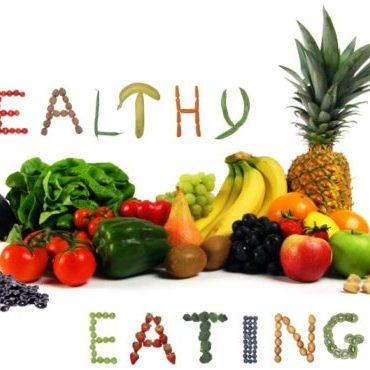
Our resident Nutritionist answers questions about milk, weight loss and those intense afternoon sweet cravings.
I was taking ephedra products for over a year before all the news was released about the harm they can cause. The thing is, they really worked for me, I lost over 10 lbs in 2 months and felt great. I have been trying to wean myself off them since all of the bad publicity, but am finding that I am gaining all of the weight I had lost, back. I am having a really hard time with this, and was wondering if you had any advice on how to either get my system back on track or if you could tell me whether or not I am at risk taking the pills…
Weight–loss products containing the herb ephedra, also called ma huang, may soon be required by the government to carry a warning label about its potentially serious side effects (heart attacks, seizures, and strokes). Legislation may be passed to ban ephedra – I do not think you should continue taking the tablets containing this substance.
There are substances now available that are chemically similar to ephedra, and some quite different – what they have in common is that nobody knows if they really promote weight loss or are safe. For example, DMAE (dimethylaminoethanol), once sold as a prescription drug for the treatment of learning difficulties, was taken off the market because of insufficient evidence that it worked. Yet it is allowed in supplements. It is known to raise blood pressure and cause insomnia.
You should follow a sensible eating regime, and begin a regular exercise routine to lose weight. Increase your metabolic rate with aerobic exercise rather than with medication – you will feel great, healthy and lose kilos at the same time.
I just had a baby and was wondering the best way I can lose weight fast and healthy?
Following a balanced eating plan of six small meals, a day is the most sensible and effective way to lose weight. Take the baby for an hour walk most days, as this will get you out of the house, relax you, burn calories, and increase your muscle mass. The eating plan on my website is ideal for a new mum. If you are breastfeeding you should increase your milk intake to three glasses a day to satisfy your calcium requirement.
Can you tell me the fat (saturated) content in sushi or vegetable rolls? None of the packets sold in the shops gives any fat content?
The fat content of sushi depends on the contents of the sushi roll. Generally, the saturated fat content is nil or exceptionally low. Fish (both salmon and tuna) have mainly omega-3 fatty acids which are the “healthy fats, the other common ingredient in sushi is avocado which is monounsaturated fat. Mayonnaise would be the only contribution to the saturated fat content, and this would be minimal as very little is used in a traditional sushi roll.
I was born with a congenital heart defect and have two young children. I would love to lose the 8kgs I’ve been left with from having children. My problem is I am not to develop heart disease as this will shorten my life expectancy and I love delicious fatty tasting food, exercise is limited, I get puffed out easily and cannot put much strain on my heart. I do not really have dinner as this makes it hard to breathe, being so full. I would love an idea of recipes that are easy to make, tasty, healthy food that will satisfy me like fatty food and a low exercise idea plan.
Having congenital heart disease you will have to become aware of the fat content of food, particularly the saturated and trans fats – both of which are hazardous to your health. Reducing your fat intake is essential both for health reasons and in order to lose weight. Your food can be tasty and quick to prepare without the excessive use of fat in your cooking. I have many recipes on my website www.arlenesway.com.au with diet plans.
Eating smaller meals at night is ideal for weight loss. Following the weekly diet menu would be ideal for your heart condition and assist you in weight loss. Exercise does not have to be “so vigorous” that you are breathless. Begin by walking at a comfortable pace for 15 minutes each day, and then slowly increase the time (and perhaps the speed). You will find that both your fitness level will increase and your capacity for exercise will improve. Walking will aid the weight loss program and is also good for heart disease. I suggest, however, that you consult your doctor prior to commencing any exercise regime.
What are the benefits of a low Glycaemic Diet?
Choosing better carbohydrates not only crowds out empty-calorie, glucose-raising foods but also helps battle many health threats. Here’s what eating more high-fibre, low GI foods will do for you:
Lower your risk of diabetes
The so-called diabetes epidemic has made headlines, and for good reason. The number of cases of type 2 diabetes (the most common type) is exploding, and many more people are in line for developing the disease. At the core is a condition called insulin resistance. Most people don’t know they have it — or that the “wrong” kinds of carbs contribute to it.
Insulin resistance occurs when the body stops responding to this critical hormone. Think of insulin as a kind of doorman. Normally, it triggers a reaction that allows glucose to pass through cell walls, where it is burned to produce energy or stored for later use. In some people, however, cells start to ignore insulin, which means the pancreas must manufacture more of it. Insulin resistance is “silent” because often the pancreas can keep up with demand by working overtime. Eventually, however, it may fail to keep up, resulting in type 2 diabetes.
Your genes, excess body fat and lack of exercise cause insulin resistance, but eating the wrong kinds of carbohydrates seem to worsen the problem. In one study, British researchers asked a group of non-diabetic women to eat a high-GI diet for three weeks, while a second group ate low-GI foods. An analysis of their fat cells detected more insulin resistance in the women who ate the high-GI diet. It’s hardly surprising, then, that several large population studies have shown that people who eat diets filled with low-fibre, high-GI carbohydrates appear to double their risk of type 2 diabetes.
The good news: You can reverse the threat of diabetes by up to 42 per cent simply by trading in your white bread, white rice and sugary breakfast cereal for hearty dark loaves, brown rice and oatmeal, according to a Harvard study of nearly 43,000 men.
Lower your risk of heart disease
Eating more whole grains could also lower your risk of heart attacks—by up to 29 per cent, according to James W. Anderson, M.D., the University of Kentucky nutritionist whose research helped make oat bran a nutritional superstar in the 1980s. Dr Anderson chalked up the benefits of oats’ soluble fibre, which lowers cholesterol. But there’s more going on than that. (In fact, one analysis published in the American Journal of Clinical Nutrition estimated that you’d have to eat three bowls of oatmeal a day to lower total cholesterol by only about two per cent.)
Eating lower-GI carbs like oatmeal and whole-wheat pasta also keeps blood sugar levels in check, and there’s little question that persistently high blood sugar increases the threat of heart attacks, perhaps by raising levels of destructive compounds called free radicals. These compounds “oxidize” cholesterol particles, making them more dangerous to your arteries. One study of more than 3,300 subjects found that people with elevated blood sugar levels were nearly three times more likely to develop heart disease.
Glucose begins to build up in the blood as insulin resistance worsens. No one is sure why, but people who have insulin resistance also tend to have high blood pressure, elevated triglycerides (a type of blood fat linked to cardiovascular disease), and low levels of heart-friendly HDL cholesterol—a recipe for disaster. This cluster of problems, along with obesity, comes together in insulin resistance syndrome, also known as metabolic syndrome.
Again, the right diet—and the right carbs—can help. One recent study at the University of Maryland showed that every serving of whole grains that you add to your diet further decreases your odds of developing metabolic syndrome. Another study, by researchers at several hospitals in Boston, found that overweight people who adopted a low-GI diet had lower insulin levels, triglycerides and blood pressure than other dieters given a low-fat meal plan. They had less inflammation, too, which is another benefit of high-quality carbs.
Curb inflammation
When cholesterol assaults artery walls, the immune system responds the way it does to any injury—with inflammation. Choosing carbs rich in soluble fibre may help put the chill on that process by clearing out some of that cholesterol.
You can cool inflammation by filling up your menu with both types of fibre—soluble and insoluble—according to a recent study at the University of Massachusetts Medical School. The researchers followed a group of more than 200 people for a little over a year, measuring their blood periodically for levels of CRP (C-reactive protein, a marker of inflammation). They also asked the subjects to describe their diets. People who ate the most fibre—more than 20 grams per day, which is the minimum amount experts recommend—had 63 per cent less inflammation than the others who ate low-fibre diets.
Help you lose weight
Can eating bran cereal and brown rice lead to slimmer hips and thighs? Population studies have shown that people who get most of their carbs from the low end of the GI tend to weigh less than others who gravitate toward sugary or starchy foods. One reason appears to be that meals that include low-GI foods keep you full lover (probably slowing digestion), which helps curb appetite later in the day.
In a recent study, researchers at the University of Sydney in Australia showed that people who ate low-GI diets were twice as likely to lose five per cent of their body weight—and keep it off—as people who ate the conventional high-carb, low-fat diet that doctors have been recommending for years. If a five per cent weight loss doesn’t sound like much, consider this: If you’re overweight and have even a hint of insulin resistance, that modest amount of slimming can reduce your risk of diabetes by 58 per cent.
For some reason, low-GI diets seem to be particularly effective in women. Compared with female subjects who ate a typical high-carb, low-fat diet, women who filled up on low-GI foods lost 80 per cent more body fat. They retained more muscle, too. The high-carb, low-GI plan had a bonus: Not only did dieters who adopted this menu keep the weight off, but their LD cholesterol dropped, too.

